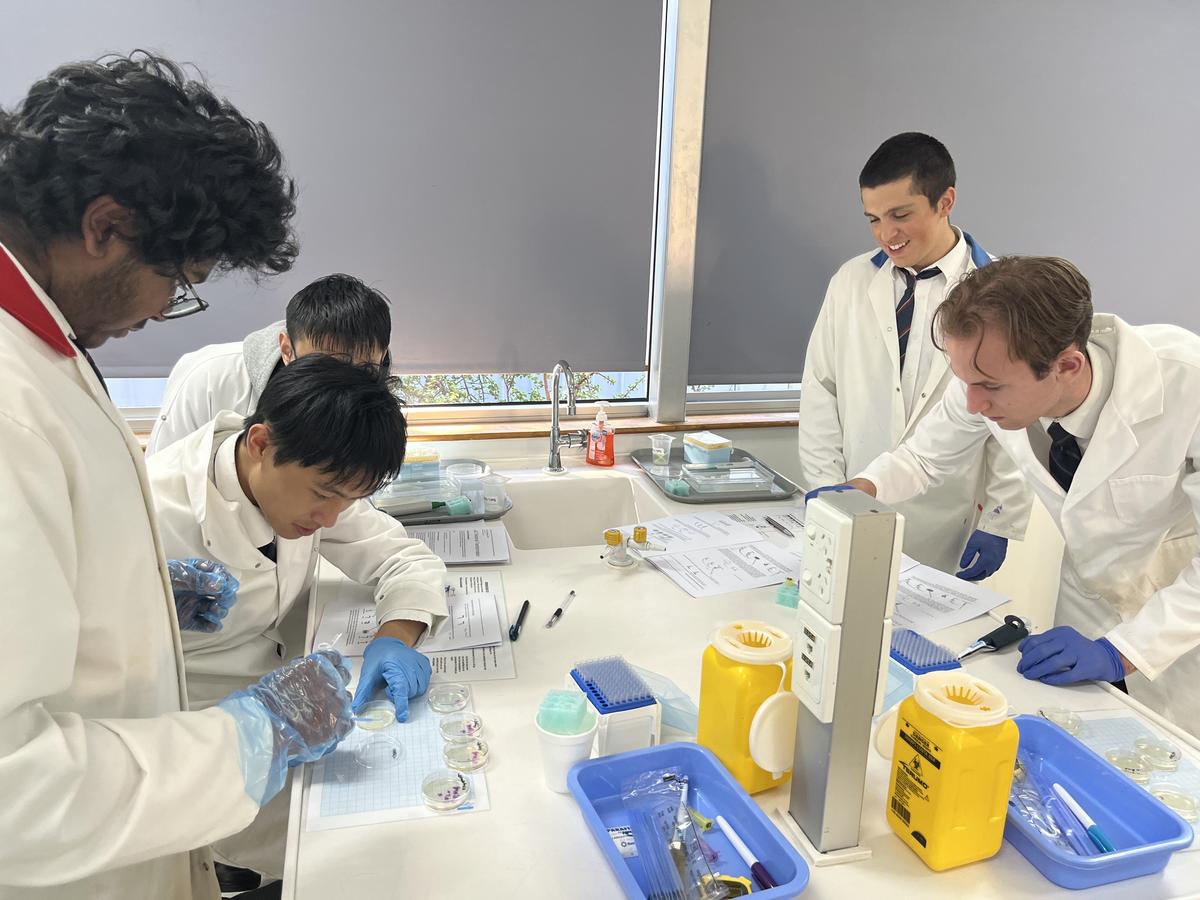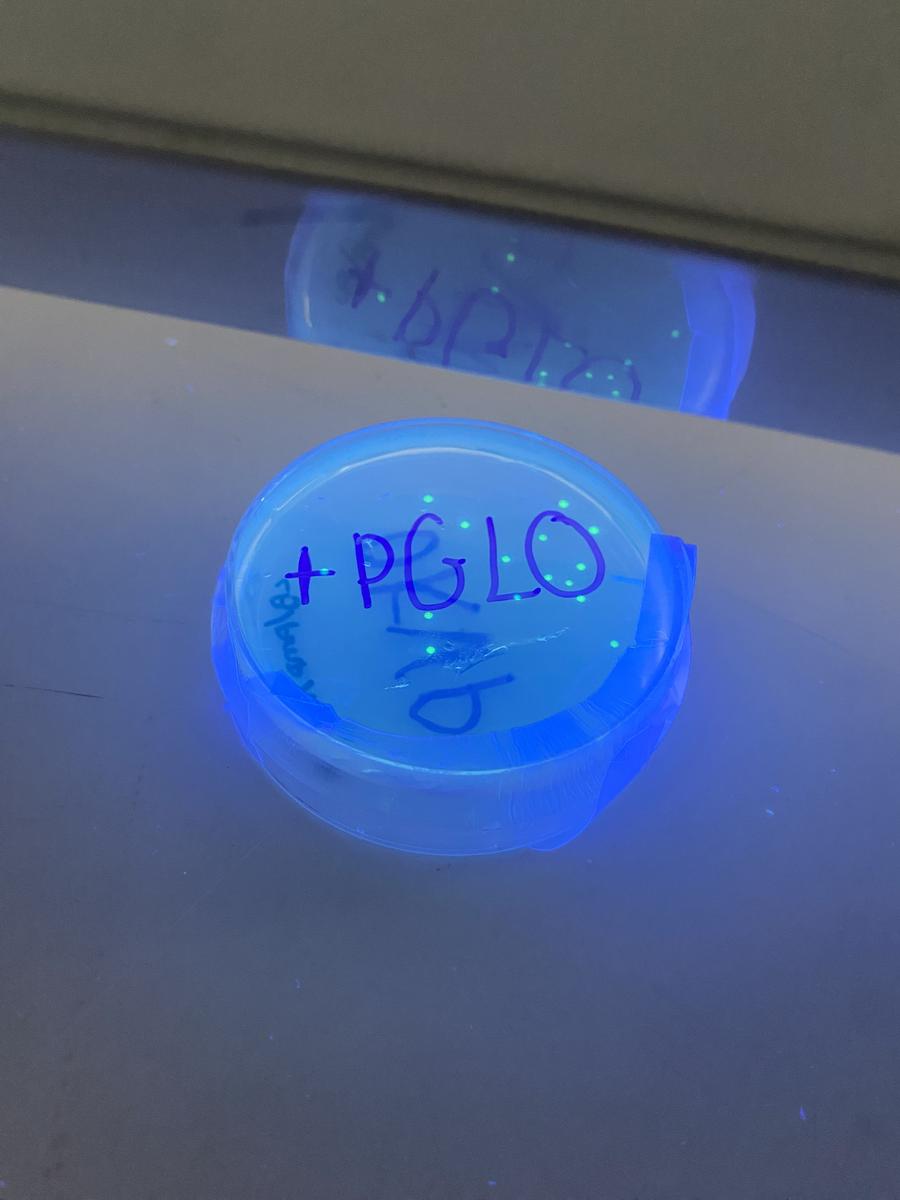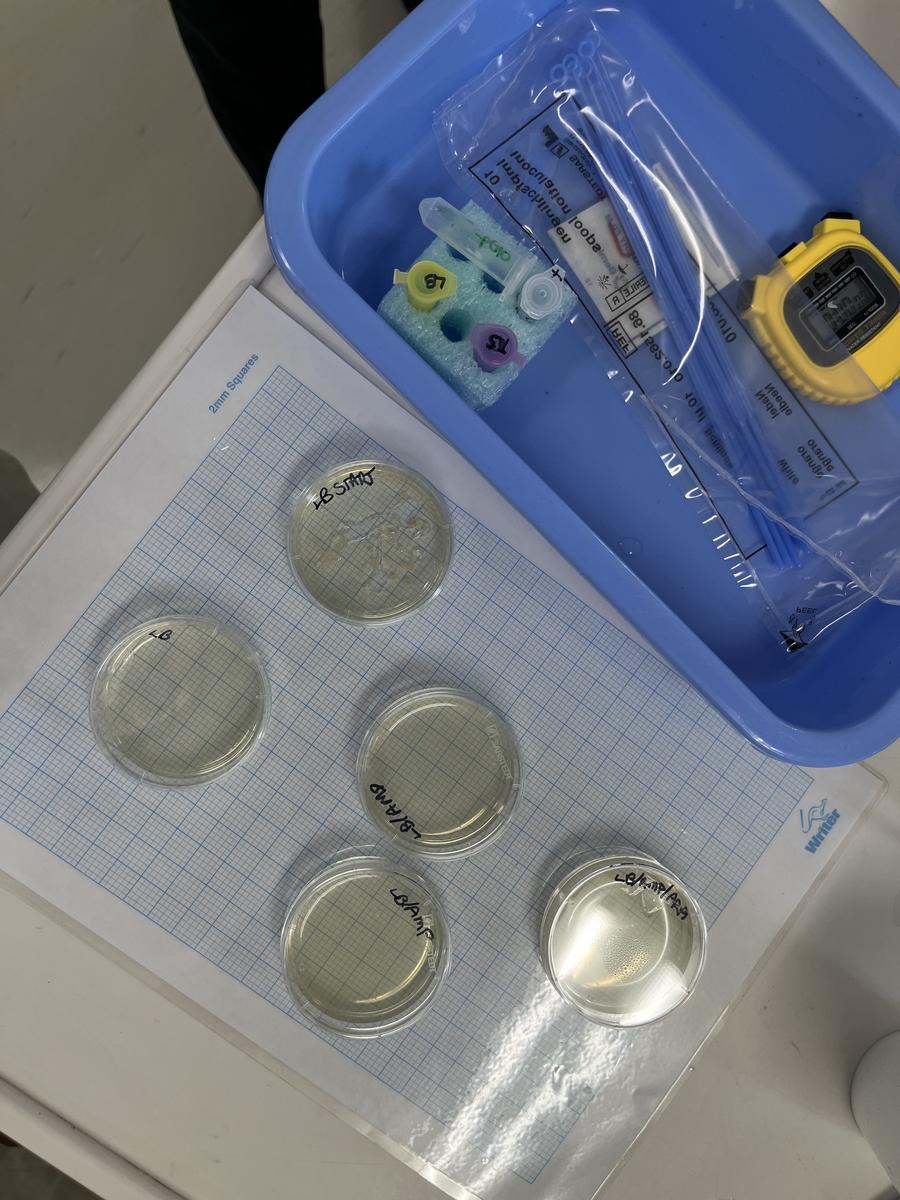SCIENCE

MAKING BACTERIA GLOW IN THE DARK
One of the standout moments in Biology this year was the bacterial transformation experiment, where we had the opportunity to see genetic engineering in action. With Mr Rose’s expert guidance, we explored how foreign DNA can be introduced into bacteria to make them glow in the dark.
The experiment involved two bacterial samples: one was introduced to the pGLO plasmid (+pGLO), containing a green fluorescent protein, while the other remained without it (-pGLO). We carefully added the plasmid DNA to the +pGLO sample, followed by a heat shock process to help the bacteria absorb the new genetic material.
The results were nothing short of exciting. The bacteria in the +pGLO sample glowed a brilliant green under UV light, confirming that the plasmid had been successfully taken up and was expressing the GFP gene. This moment was a perfect example of how scientific theory translates into real-world results, giving us a deeper understanding of bacterial transformation and gene editing.
This experiment not only helped us improve our lab skills but also gave us a glimpse into the real-world impact of genetic engineering and its role in medical research and agriculture.
Kaia Haykowski and Nicole Li
Year 12 Students






